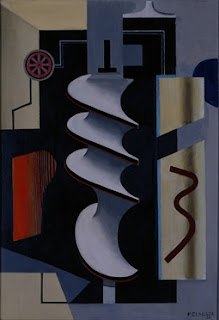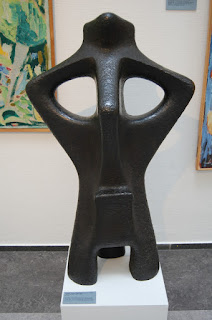Tammam Azzam
Born in Damascus, Syria in 1980, Tammam Azzam received
his artistic training from the Faculty of Fine Arts, University of Damascus
with a concentration in oil painting. Alongside a successful career as a
painter in Syria, Azzam was a prolific graphic designer, an experience that
would inform his digital media work after relocating to Dubai with the start of
the country’s conflict.
The initial phase of Azzam’s work was distinguished by
a ‘hybrid form’ of painting with applications of various media that allowed him
to arrive at tactile interactions between surface and form that multiply as
compositions evolve. These semi-abstract works use unconventional materials
such as rope, clothespins, and other found objects in order to accentuate the
depth, texture, and space of laboured picture planes, creating a visible
tension. Although outwardly different in appearance, the series that resulted
from these early experiments were inspired by the artist’s changing perceptions
of specific urban environments.
Following the start of the uprising in Syria, Azzam
turned to digital media and graphic art to create visual composites of the
conflict that resonated with international viewers. These widely distributed
works are informed by his interest in the interventionist potential of digital
photography and street art as powerful and direct forms of protest that are
difficult to suppress. In early 2013, Azzam made worldwide headlines when his
Freedom Graffiti print went viral on social media.
Recently, he has returned to painting with Storeys, a
series of monumental works on canvas that communicate the magnitude of
devastation experienced across his native country through expressionist
compositions of destroyed cityscapes. Chronicling the current state of his homeland,
Azzam delves into a cathartic exercise of reconstruction, storey by storey.
Alongside these new paintings, he has produced a significant body of giclée
prints and installations that depict the facets of cities through similar
themes.
Azzam has contributed to large-scale international
exhibitions such as the FUU-Street Art Festival, Sarajevo (2015); Vancouver
Biennale, where he was in residence (2014); FotoFest Biennial (2014), Houston;
Dak’Art: Biennial of Contemporary African Art, Dakar (2014); Alexandria
Biennale (2014); and the 30th Biennial of Graphic Arts, Ljubljana (2013).
In recent years, Azzam has participated in solo and
group exhibitions at such venues as Künstlerverein Walkmühle, Germany (2016);
Columbia University, New York (2016); Ayyam Gallery - 11 Alserkal Avenue, Dubai
(2016); Banksy’s Dismaland, Weston-super-Mare, United Kingdom
(2015); Fondazione Giorgio Cini, Venice (2015); Framer Framed in de
Tolhuistuin, Amsterdam (2015); Forum Factory, Berlin (2014); Lena & Roselli
Gallery, Budapest (2014); Liquid Art House, Boston (2014); Rush Arts, New York
(2014); Busan Museum of Art, Seoul (2014); 1x1 Art Gallery, New Delhi (2014).
In 2016, Azzam received an
artist fellowship at the Hanse-Wissenschaftskolleg Institute for Advanced Study
in Delmenhorst, Germany.

















































